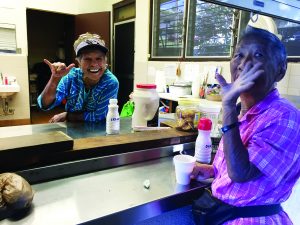 Volunteering — an activity that is voluntary, unpaid, structured by an organization and directed toward a community concern — is as beneficial for the older adult who engages in it as it is for those on the receiving end.
Volunteering — an activity that is voluntary, unpaid, structured by an organization and directed toward a community concern — is as beneficial for the older adult who engages in it as it is for those on the receiving end.
While fewer older adults volunteer compared to those who are younger, persons age 65 and over who do volunteer spend more time on it. Approximately 35 percent of older adults in the U.S. volunteer an average of 71.5 hours per year. The value of their work is not trivial, estimated at $44.3 billion per year.
The Impact of Volunteering. Older adults who volunteer reap many benefits. They experience higher levels of well-being, including better self-reported health. They have less depression and an enhanced ability to engage in daily activities. While more research is needed, some suggest that volunteering is associated with improved brain health and decline in mortality.
As the number of volunteering hours increases, so do the positive effects of volunteering, but only up to a point. Research indicates the optimal amount of time to volunteer is around 100 hours per year, or two to three hours per week. Even modest levels of engagement in volunteer activities are beneficial.
Why does it work? Volunteering provides greater health benefits compared to other types of social activities. What makes this role especially valuable is a combination of qualities and motivations specific to the role. Young adults tend to volunteer to acquire skills and to advance their careers. Older adults are more likely to volunteer to help others, stay active and replace lost roles, such as being a spouse.
The factor of “mattering” also comes into play when others rely on the volunteer who contributes to society.1
Promoting successful volunteer programs. Despite the abundant benefits, approximately 30 percent of older adults drop out of a given volunteer role after one year. What’s a health and/or social service organization to do? Various volunteer management practices have proven to be effective:2 appropriate supervision and communication, liability coverage, careful screening and matching volunteers to particular jobs, annual measurement of volunteer impact, training and professional development for volunteers, training paid staff in working with volunteers, ensuring that volunteers gain a sense of accomplishment by engaging in meaningful tasks and recognizing volunteers for their contributions.
CENTER ON AGING — University of Hawai‘i at Mānoa
2430 Campus Road, Gartley Hall, 201B, Honolulu HI 96822
808-956-6124 | map3@hawaii.edu
www.hawaii.edu/aging/
1 Morrow-Howell 2010
2 Hager and Brudney 2004; McKee & McKee 2012


Leave a Reply